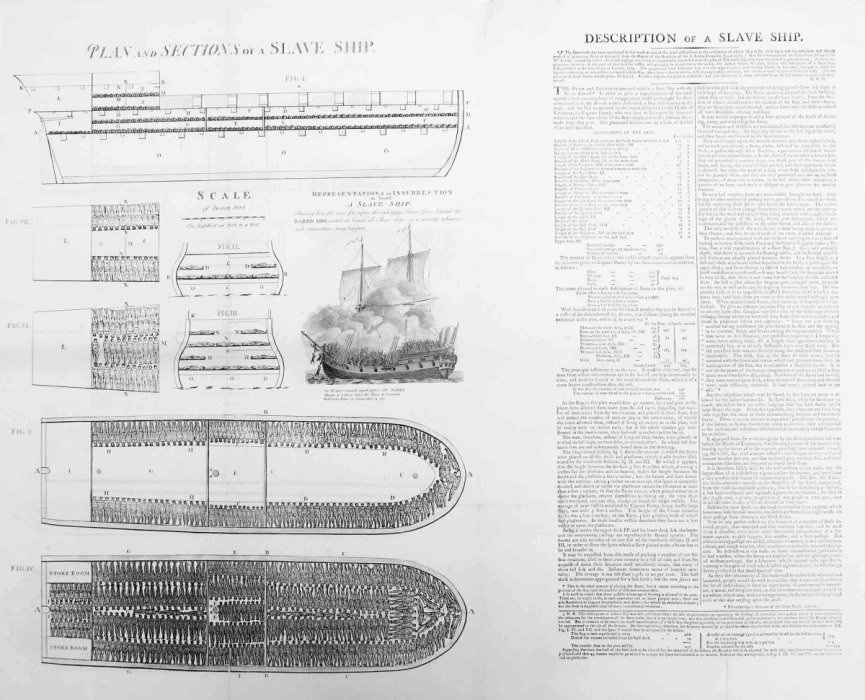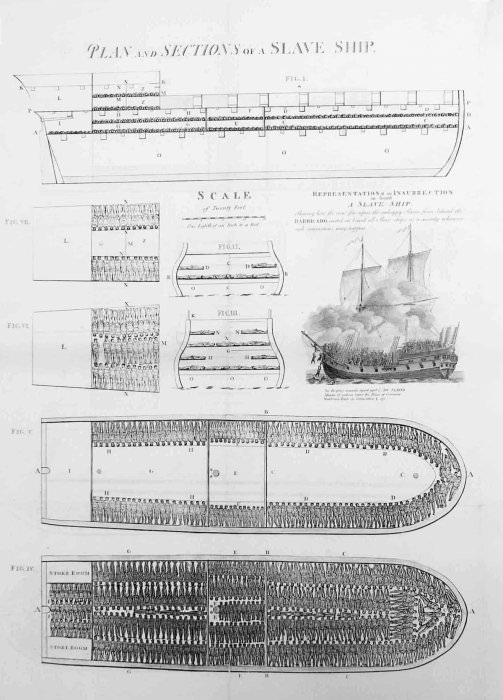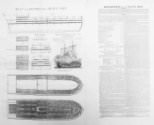Plan and Sections of a Slave Ship, from Carl Bernhard Wadström’s An Essay on Colonization Particularly Applied to the Western Coast of Africa

Plan and Sections of a Slave Ship, from Carl Bernhard Wadström’s An Essay on Colonization... (London: Darton and Harvey, 1794–95)Plan and Sections of a Slave Ship, from Carl Bernhard Wadström’s An Essay on Colonization... (London: Darton and Harvey, 1794–95). Beinecke Rare Book and Manuscript Library, Yale University, BrSides Double Folio 2012 39

Plan and Sections of a Slave Ship, from Carl Bernhard Wadström’s An Essay on Colonization... [detail], (London: Darton and Harvey, 1794–95)Plan and Sections of a Slave Ship, from Carl Bernhard Wadström’s An Essay on Colonization... [detail], (London: Darton and Harvey, 1794–95)
Plan and Sections of a Slave Ship, from Carl Bernhard Wadström’s An Essay on Colonization Particularly Applied to the Western Coast of Africa
(London: Harvey and Darton, 1794-95)
Unknown artist
Line engraving with aquatint, engraved inscriptions, and letterpress on wove paper
This illustration is adapted from an engraving entitled Description of a Slave Ship, published in 1789 by the Society for Effecting the Abolition of the Slave Trade. Conceived as a work of abolitionist propaganda, the Description drew attention to the brutal methods used by British traders to transport enslaved men, women, and children from Africa to the West Indies—a journey known as the Middle Passage. At left, plan and section views of a typical British slave ship show it “stowed” with hundreds of enslaved people. The adjoining text details the cramped quarters and horrific conditions in the holds of the slave ships and implores its viewer to help “put an end to a practice, which may . . . be styled one of the greatest evils at this day existing upon the earth.”
The Description was widely circulated and copied in Britain. This version, which appeared in Carl Bernhard Wadström’s abolitionist Essay on Colonization (1794–95), includes a vignette, “Representation of an Insurrection on board a Slave-Ship,” as yet a further argument against the trade. A portrait of Wadström appears in The Benevolent Effects of Abolishing Slavery, also included in the exhibition.
Beinecke Rare Book and Manuscript Library, Yale University, BrSides Double Folio 2012 39

![*Plan and Sections of a Slave Ship*, from Carl Bernhard Wadström’s *An Essay on Colonization...* [detail], (London: Darton and Harvey, 1794–95) *Plan and Sections of a Slave Ship*, from Carl Bernhard Wadström’s *An Essay on Colonization...* [detail], (London: Darton and Harvey, 1794–95)](https://interactive.britishart.yale.edu/sites/default/files/styles/ycba_thumbnail/public/FoE_Wadstromy_Plan%20and%20Section%20of%20a%20Slave%20Ship%20-%20cropped.jpg?itok=xCg8Scbj)
![[Untitled map of abolition of the slave trade] from Thomas Clarkson, *The History of the Rise, Progress, and Accomplishment of the Abolition of the African Slave-Trade by the British Parliament*. Beinecke Rare Book and Manuscript Library, In W890 Zz808 T. Clarkson, [Untitled map of abolition of the slave trade]](https://interactive.britishart.yale.edu/sites/default/files/styles/ycba_thumbnail/public/FoE_Clarkson_The%20history%20of%20the%20rise.jpg?itok=uMOCoiju)